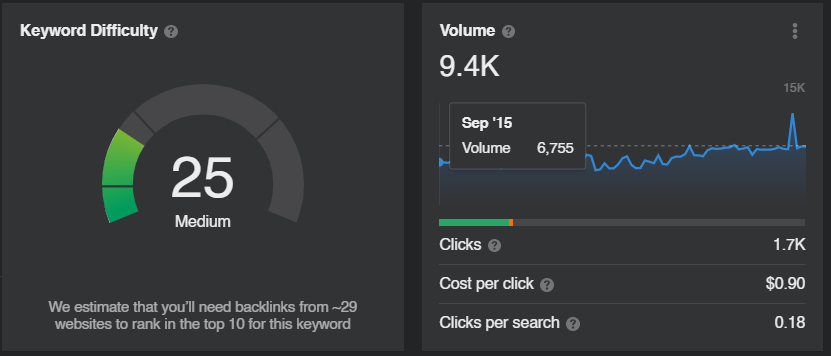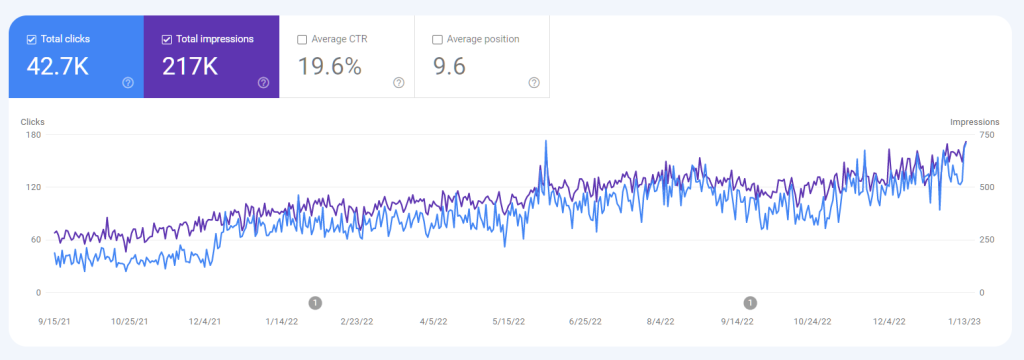Have you ever wondered how keyword research for programmatic SEO websites differs from the standard procedure? Well, in reality, it is pretty similar. The only difference is that a certain amount of estimation and data extrapolation must be done during the process. Today we will talk about this topic and explore its nuances further!
Summary
- Traditional keyword research involves identifying low-competition keywords with high search volume to ensure quick rankings.
- Programmatic SEO requires making educated assumptions and extrapolating data, such as population or popularity metrics.
- Population extrapolation can be done by taking the population of a city one has data for and applying it to cities without available information.
- Popularity extrapolation is similar but uses more subjective metrics like estimated website traffic, branded searches, social media followers/engagement rate, etc., instead of concrete numbers.
Summary generated by the AI tool Jasper
Normal keyword research
If you’re launching a new niche website, the recommended approach is to identify low-competition keywords with as much search volume as possible. This will be your modus operandi for successful keyword research.

For many of us, the ideal is working with low-competition keywords to ensure quick rankings and get the feedback loop rolling. When you start to see wins with low comp & volume keywords, it’s time to move on up and target more difficult ones! Doing so will result in even greater successes over time.
Programmatic keyword research
Programmatic SEO is similar to traditional SEO. However, you create content that’s not just dependent on keyword data from various tools. With programmatic SEO, you may have to make educated assumptions and extrapolate keyword data. There’s a prime example, later on, sit tight.

How to start making assumptions
One thing I want to include before continuing is you have actually to know what you’re talking about. Or, at the least, think you know what you’re talking about.
Start with a seed keyword or a few keywords
To start, I use a seed keyword or several to begin my research. For example, if we are creating city pages for metros in the US, I’d start with keyword data for New York, Los Angeles, Phoenix, Houston, and Seattle, which would be used as benchmarks.
Or, again, this comes with knowing you’re stuff: maybe you would avoid the outlier metros and find the keyword data for smaller metros, perhaps the upper hundred thousand to low millions.
Check the pop
Pop can stand for popularity, population, or any other pop word you want it to. Perhaps it’s not as easy as the city population; you may have to look at the social following, branded search, or other soft data metrics you can compare.
Extrapolate the data
Then, using the data gathered from those initial keywords, I can apply it to other new ones that I want my website to rank for – even though there isn’t any available information about them yet.
An example of population extrapolation
Let’s say we are developing a website for butchers that are intended to provide lead gen opportunities by functioning as a directory. You want to create a page for every metro above a population of 100k. In reality, you’d like several keywords to seed from, but we’ll keep the example simple.
Let’s say one of the cities you have data for is Kansas City, with the keyword Kansas City butcher receiving 1,200 searches per month. One of the keywords you don’t have data for is Sioux Falls butcher.
But you do have the population of each metro!

Kansas City’s population is 2.2 million, and Sioux Falls’ population is 282,000. A logical estimate is that Sioux Falls would get 13% of Kansas City’s, or roughly 130-140 searches per month.
Everyone knows that if you create a page, it won’t just rank for one keyword – variations like “butchers Sioux Falls” or “cheap butcher” could appear to anyone searching locally in the Sioux Falls Metro Area.
That’s what I mean when referring to population extrapolation: a cool concept that even rhymes!
Popularity Extrapolation
Popularity is essentially the same concept, but you’re utilizing more subjective data instead of using concrete numbers as a measure. Hard data would be like facts and figures, whereas soft data includes opinions or surveys that are harder to quantify.
To begin, you can use a familiar keyword and then look at other metrics like estimated website traffic through search engine tools — even if their accuracy is questionable. However, to ensure that the data is consistent when comparing various websites or services, use the exact web estimates for each instance. This way, although they may not be accurate figures, they will still keep everything on an even playing field.
By assessing branded search, you can easily compare the organic traffic from people searching precisely for a brand’s name.
Social media is another place to start if you’re creating content for a new product, platform, or service. Take a look at their followers and also engagement rate – bot followers or non-engaging accounts can’t contribute to popularity.
You can also look at what’s already giving you good results.
My real-life example


Brand One is a major player in the space, currently performing with around 12 million branded searches per month. Brand Two is an upcoming competitor; it started at around half a million monthly brand queries when I decided to give it a shot at creating content for it.
Took what was working for Brand One, swapped out some information for Brand Two, and it began producing incredible numbers!


It helps that some of the pages are literally the only ones on the internet. People come here, sign up, and I receive ongoing commissions for as long as they stay subscribed.
That’s the power of Pinesol, baby!